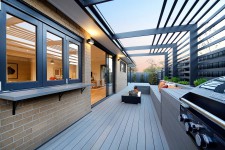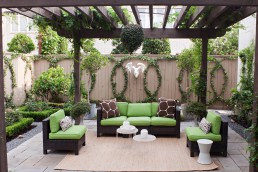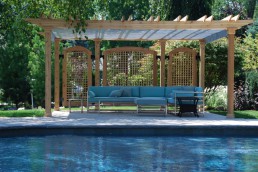Planning an Outdoor Space: Blurred Lines Create Transitional Spaces
Over the last few seasons, designers and architects have blurred the lines between interior and exterior areas of the home. The effortless planning choice provides a seamless transition between two spaces creating a continuous open room boasting the best of both worlds. This subtle feature is here to stay, whether inside or out homeowners can enjoy relaxing views, listen to gentle rainstorms or entertain guests without the loss of sight-lines and interaction.
When planning an outdoor space, designers are sure to acknowledge trends that will ignite changes in design. A growing awareness of environmental footprints, an aging baby-boom population and a rise in the cost of living has supported the development of these transitional rooms. Opening up to your exterior allows you to alleviate a reliance on air conditioning during the summer months, create entry points devoid of steps, and perhaps most enticing, add square footage to your home that is non-taxable.
The growing demand has also encouraged a surge in innovative product developments such as, glass pocket doors, radiant flooring and retractable canopies. More then ever, homeowners are embracing the seamless lifestyle that transitional spaces provide.
Tempted to follow the trend? Here are a few ideas to help you get started planning an outdoor space from the inside out.
Incorporate Large Expanses of Glass Windows and Doors
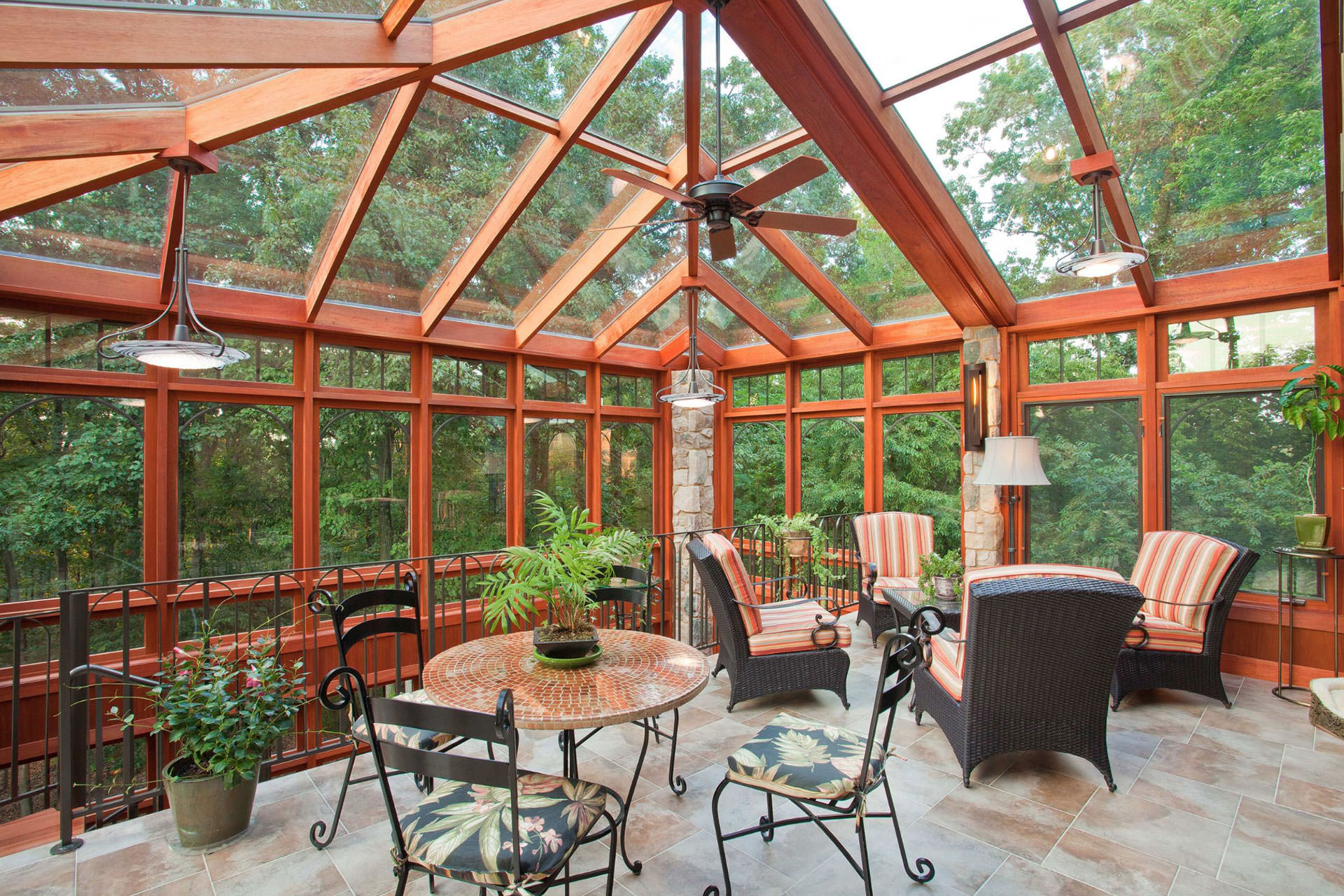
Huge sliding doors and windows open your interior to the outdoors without impeding sightlines or hindering interaction. Just as a photographer composes a picture, views from your home should frame and highlight the best features of your outdoor space. The eye should naturally be drawn to a focal point in the garden such as a magnificent tree, an attention-grabbing sculpture, a delightful water feature, or an intimate seating area.
Use Uniform Features
Designers recommend using uniform products to make the seamless transition from indoors to outdoors. For example, continuous flooring material, such as concrete floors or hardwood, can blur the line between the interior and exterior. If that’s not possible, try using similar materials with the same ‘feel’ to minimize the change. If you’re fortunate enough to have a wood ceiling, utilize the same type of wood on the ceilings outdoors. Weather-resistant indoor/outdoor furniture that mimics the style inside your home can also contribute to a smooth transition.
Retractable Canopies and Coordinating Fabrics
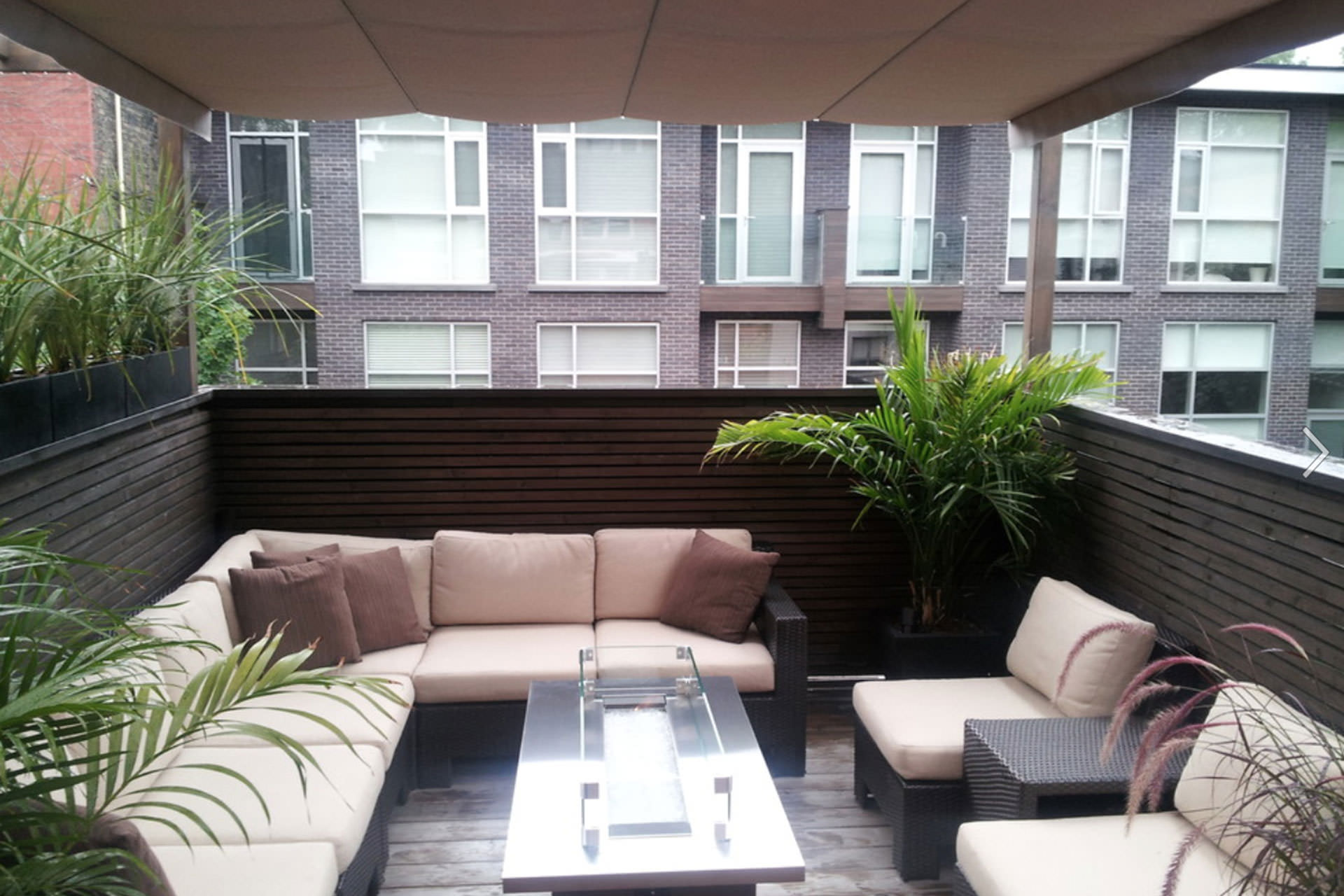
At its most basic function, a retractable canopy provides protection from both the sun and rain. However, with custom features, a canopy ties the outdoor space together, serves as an accent piece, the focal point, or foundation for general color and themes. Create a unified area by coordinating fabrics from the closest indoor room to your outdoor space. Since your shade structure will be visible from inside your home, make sure your fabric choice looks just as beautiful from the inside.
Add Decorative Touches from the Indoors
Add decorative, cozy touches to your outside space typically used indoors. For example, rugs, throws, and cushions in complimenting colors, patterns, and textures can all be used to replicate the décor in your home. Or perhaps you decide on an eye-catching statement piece such as an elaborate coffee table, a piece of artwork, or an exotic statue collected from your travels to help blur the lines between indoors and outdoors.
Ensure a smooth transition from the interior spaces of your home to the exterior. I have listed only a few here, but the benefits are endless. Transitional rooms will never go out of style, and if you plan ahead, your outdoor space will be trendsetting by spring.
Retractable Solutions for Outdoor Spaces
Please complete the form below to download our free eBrochure.
Price List included
